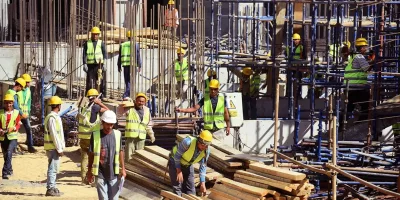Report Egypt: Detention watch 3 (May 2017)
Following CfJ’s first two report on human rights violations against detainees in Egyptian detention places for the first two months of 2017 (January and February, March and April); Detention Watch project proceeds in this issue to provide an analytical overview of the human rights situation in Egyptian detention places – formal and informal – during the month of May 2017; while holding the authorities accountable of their obligations mandated by law (Egyptian constitution, Egyptian criminal law, and international human rights treaties Egypt has signed).
The end objective of such periodic reports is to
- inform national and international stakeholders of the ongoing conditions inside places of detention,
- enable families of victims and detainees to factually establish claims of illegal and inhumane circumstances that are endured,
- engage or demand engagement of authorities into a dialogue that can formulate coherent and consistent strategies and legislations that put an end to such violations,
- support prevention of impunity of human rights violations in places of detention,
- contribute to the transitional justice mechanisms that this country will or might employ at a later stage
The methodology of this activity primarily entailed monitoring and observing violations being reported formally and informally on a day-to-day basis. After collecting the primary data, the project team employed the verification tool; a step that is regrettably overlooked by many other human rights organizations reporting in the same field due to difficulties establishing contact, time consumption and risks associated. Authenticating the data collected is a crucial step to safeguard the credibility of the data presented, and to be able to legally hold the violators accountable with proof. Accordingly, it was imperative for Detention Watch to communicate with the families of each detainee who suffered a violation and verify all the information needed. All the gathered data whether monitored or verified were finally compiled in this report with a contextual and statistical analysis; while shedding light on the challenges and limitations handled while working on the material.
Key findings that Detention Watch reached can be summarized as follows:
- 46 cases of violations were monitored in May 2017
- Out of those 46 cases, a 52% rate of medical negligence cases was recorded, 22% rate of torture 15% rate of enforced disappearances, and 8% rate of medical negligence leading to death
- Cases of enforced disappearances account up to 22% of total violations
- Tora Prison is the detention place with the highest number of violations reported across all of Egypt. 22% of the cases of medical negligence, torture and medical negligence leading to death violations took place inside Tora prison in May 2017.
- the geographical spread of violations during the month of May is considered to be the widest since the start of 2017 with a total of 10 different governorates
- records of mass violations were recorded where a number of victims inside the same detention place reported suffering ill-treatment in prisons such as Ataqa, Zagazig, Banha, Qena, Tora, ElHadra and AlAbaadeya.
- Out of the 46 cases monitored, 19 cases were verified (40% rate)
- Prisons category come first with highest violations recorded – mainly medical negligence, then torture; followed by state security premises (informal detention place) where enforced disappearance and torture scored highest
- Geographically, Cairo governorate sets the highest records of violations, followed by ElMenoufia and Alexandria.
- the most common violations observed in the data verified are Enforced Disappearance and Medical Negligence, followed by torture, then extrajudicial killings
- Detention places with highest records of violations can be viewed in the following order: Tora Prison (Cairo), then equally Borg AlArab Prison (Alexandria), AlAqrab (Cairo), State Security Premises in both Cairo and ElMenoufia.
- the only 2 detention places known to hold enforced disappearance victims’ whereabouts are State Security Premises in both Cairo and ElMenoufia, while the rest of the forcibly disappeared detainees remain in unknown places up till now
- Detainees facing medical negligence have spent from 7 months up till 36 months under arrest; showing an underlying positive correlation between time spent in detention and possibilities of deteriorating health conditions that are faced with negligence
- In May, prisons were hosts to torture incidents more than state security premises (most common during previous months)
- The most targeted age group is youth (16 – 30), followed by an older generation (31 – 50), then finally the elderly (above 50)
- The average days spent under disappearance appears to be 28 days per detainee – average of one month.
- the most targeted age group (as in the last two reports) is youth during their teenage years and their twenties. followed by the older generation (in their thirties and forties), and then last come the elderly (above 50 years of age).
- More than half of the victims of violations (58%) didn’t go into court yet; are held pre-trial. The rest remain post-trial detainees
- Average Number of months spent in detention since arrest is 11.2 months (almost 1 year) per detainee/victim of violation
To view the report click here

![POST[1046] Report Egypt: Detention watch 3 (May 2017)](https://www.cfjustice.org/wp-content/uploads/2017/06/POST1046-1000x500.jpg)




